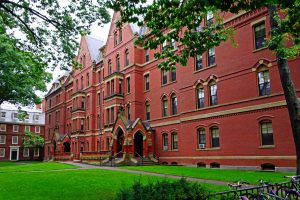
Overview:
The United States is known for providing the highest quality of education in the world, enabling its graduates to succeed at the highest levels in countless fields and countries. In a recent ranking of the world’s best universities, the U.S. had no less than 8 universities in the top 10, including, Harvard University, Massachusetts Institute of Technology (MIT), University of California—Berkeley, and Stanford University, just to name a few.
If you are a foreigner and would like to study in the United States, this may be possible with a student visa. There are numerous types of student visas, the main ones being the F and M visas. An F-1 Student Visa allows a foreigner to enter the U.S. and study at an accredited university, high school, elementary school, language school, or other academic institution. An M-1 Student Visa allows a student to come to the U.S. under vocational and other non-academic programs.
In addition, F-1 and M-1 students may gain work experience in the U.S. following, and sometimes during, their course of study in the United States. Spouses and unmarried children under 21 years of age may also enter the United States as dependents of the student.
For information regarding other available student visas, please contact us by clicking here.
Benefits of Obtaining a Student Visa:
The benefits of obtaining an F-1 or M-1 Student Visa are numerous and include the following:
- Temporarily live in the United States;
- Study in the U.S.;
- Obtain an American diploma, degree, certificate, etc.;
- Gain salaried work experience and skills in the U.S.; and,
- Bring spouse and unmarried children under 21 years of age with you to the U.S.
Eligibility:
Although the requirements for obtaining an F-1 or M-1 Student Visa will depend upon certain factors, they can be summarized as follows:
- Be a bona fide student qualified to pursue a full course of study;
- Be proficient in English or will receive proficiency in English;
- Be accepted by an SEVP-approved school/institution;
- Have a foreign residence with no intention of abandoning it;
- Establish the unlikelihood of becoming a public charge; and,
- Be deemed eligible and admissible by the relevant U.S. immigration department.
Process of Obtaining a Student Visa:
The process of obtaining either an F-1 or M-1 Student Visa will depend upon the applicant’s circumstances and numerous factors, but the process can be summarized as follows:
- Apply to an SEVP-certified school/institution;
- Be accepted to an SEVP-certified school/institution;
- Receive Form I-20 from the school/institution;
- Pay the I-901 SEVIS fee;
- Complete the Online Non-Immigrant Visa Application, Form DS-160;
- Pay the visa application fee;
- Schedule an interview with the appropriate U.S. Embassy or Consulate;
- Gather and prepare the required documentation for the interview;
- Attend the visa interview with the U.S. Embassy or Consulate;
- Get approved for your student visa;
- If applicable, pay the visa issuance fee; and,
- Enter the United States.
The Law Office of Van R. Ngo, LLC, assists its clients with all of these steps to ensure that its clients have the best chance of getting approved for a student visa. In addition, we use all of our experience to assist our clients in finding the right school/institution based on our clients’ skills and individual needs. We know that studying in the U.S. can be an overwhelming process; thus, we also assistance our clients throughout the entire application process with the right school/institution that best meet their needs.
Contact Us:
For more information about U.S. student visas and to find out if a U.S. student visa is right for you, please contact us today by clicking here.
